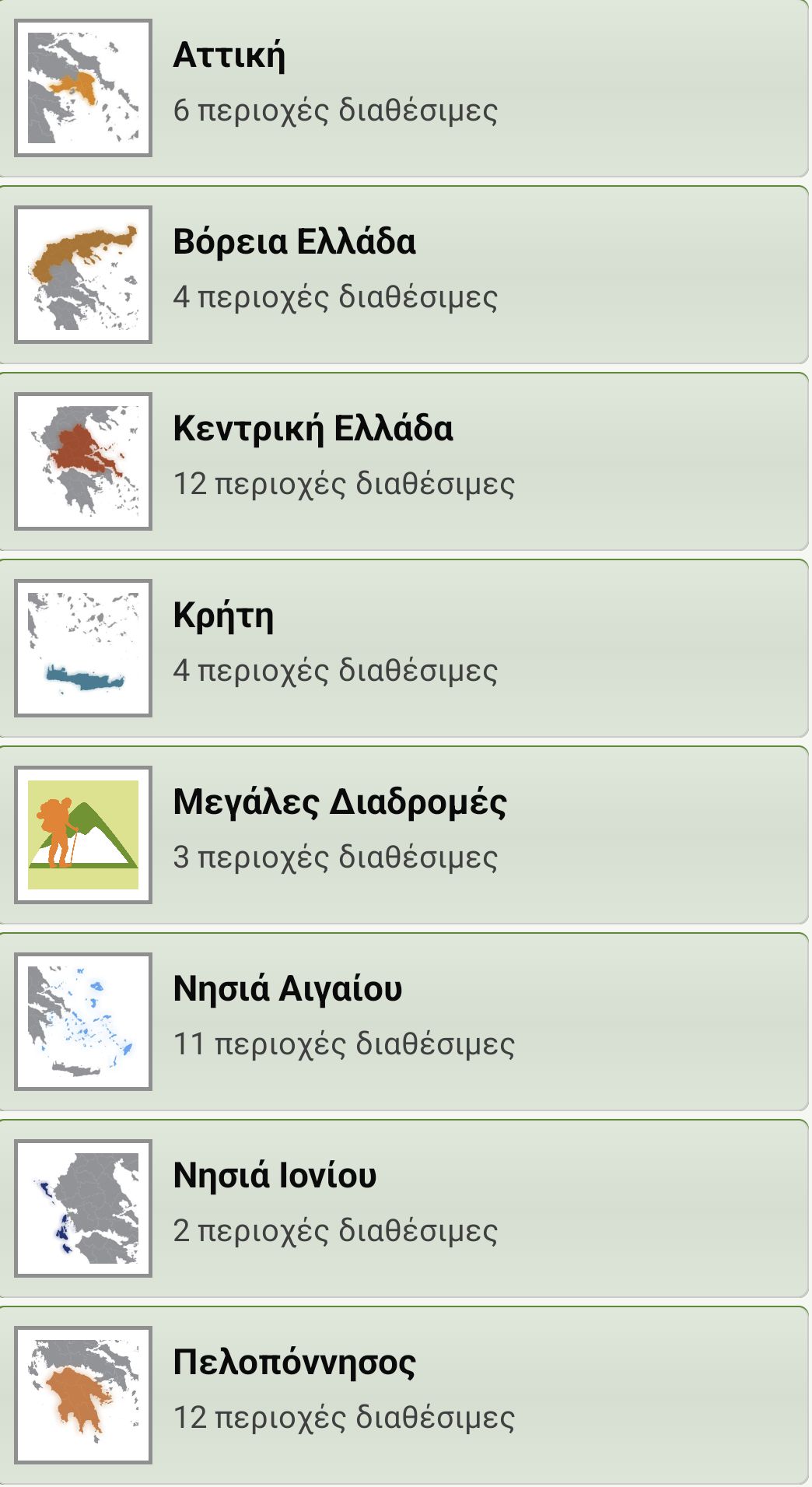Mycenaean geography
Mycenaean geography
The geography of the region of Mycenae, i.e. the semi-mountainous area between Mycenae, Agionori, Agios Vasilios and Dervenakia, is dominated by two elements: the low mountain range of Nyfitsa and the tectonic, karstic or alluvial plains that surround it.
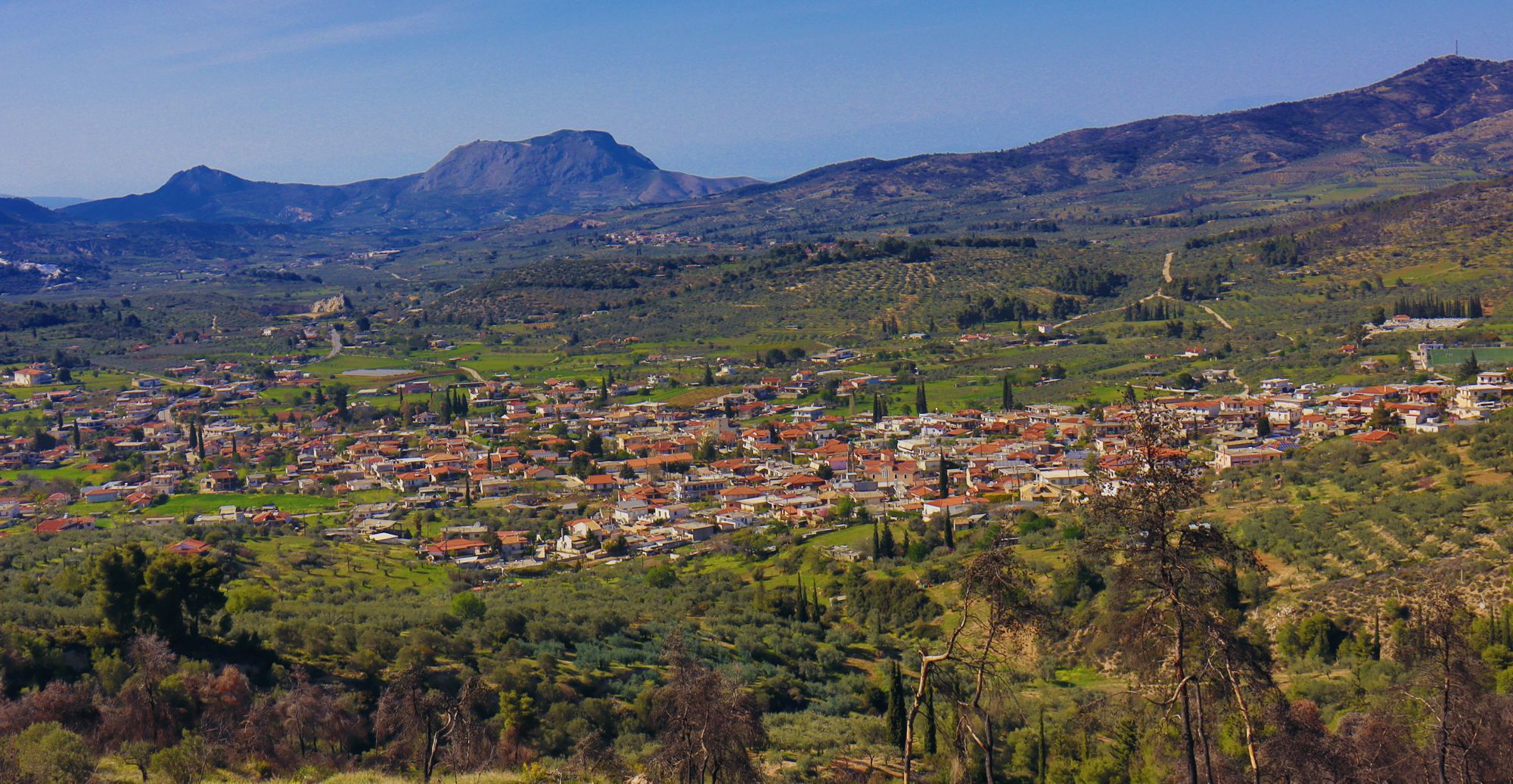
Akrokorinthos stands out in the background
Click to enlarge
Of course, the villages, agricultural land and cultural sites of the area are more concentrated in the plains than on the mountainous regions. Thus, it makes sense to start describing the main components of the surrounding area, before moving on to the tricky chapter of the hinterland.
The obvious geography
Starting from the north, the main poles in the surroundings of the Mycenaean landscape’s core are the settlements of Klenia, Agios Vasilios and Chania, which are developed south of Chelimodi somewhat in a radial way, while Athikia stands more separate. Chelimodi and Athikia have always been strongly controlled by Corinth and maintain a pure rural character still today.
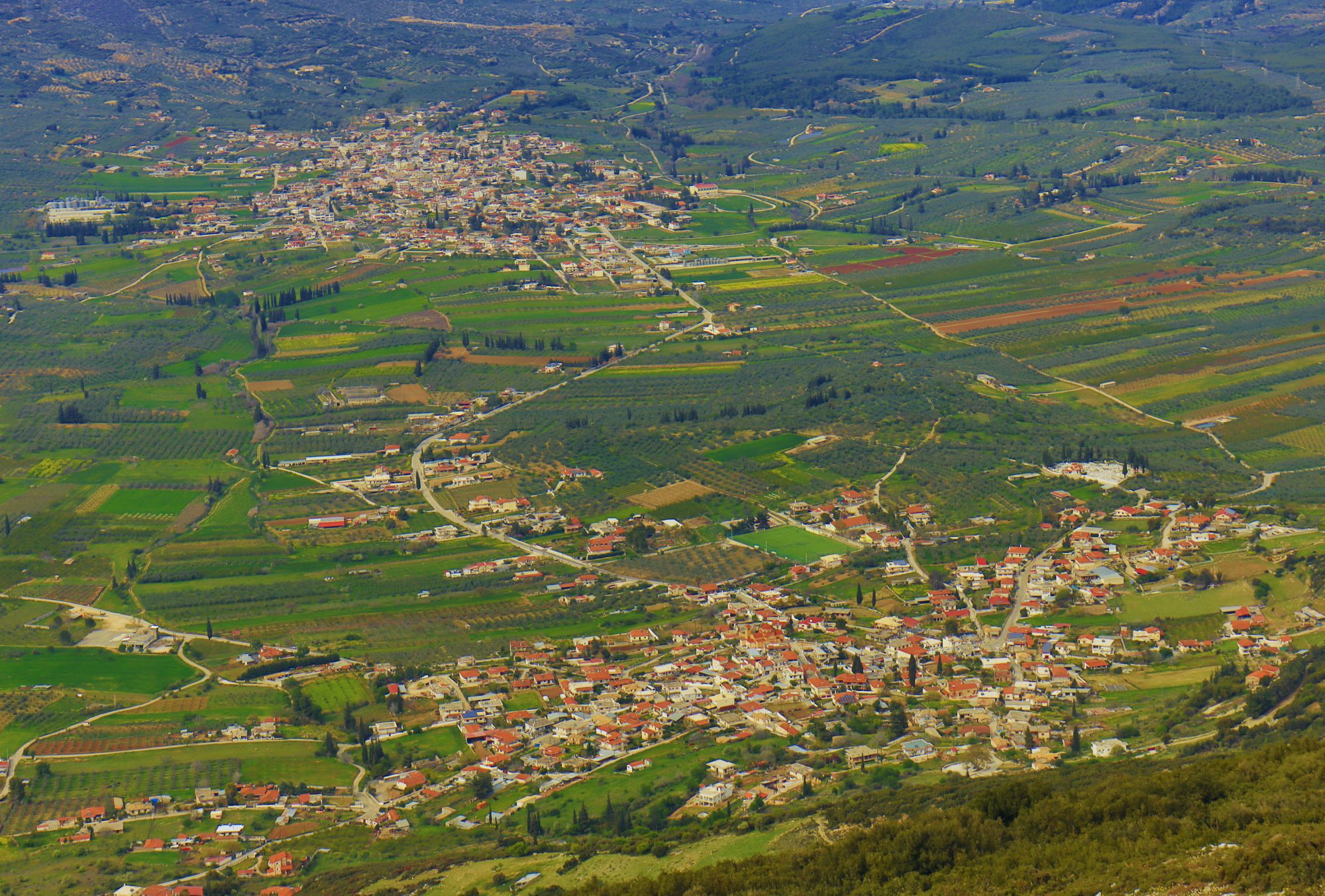
Click to enlarge
Klenia and Chelimodi. Both settlements were built at the feet of the mountains, to make room for farming. However, nowadeays are approaching each other
To the west lies the great Argolic plain. This vast agricultural enclave - along with the proximity of the sea, the presence of the great karstic springs of Lerna and the exuberant topography of the surroundings, was at the base of the wealth of the Mycenaean civilization. Mycenae stands on a natural terrace overseeing this vast plain and its natural wealth, which is literally spreading at its feet. In modern history, this role was assigned to many, smaller, settlements, which prospered or were erased in time, depending on the circumstances of the rural economy.
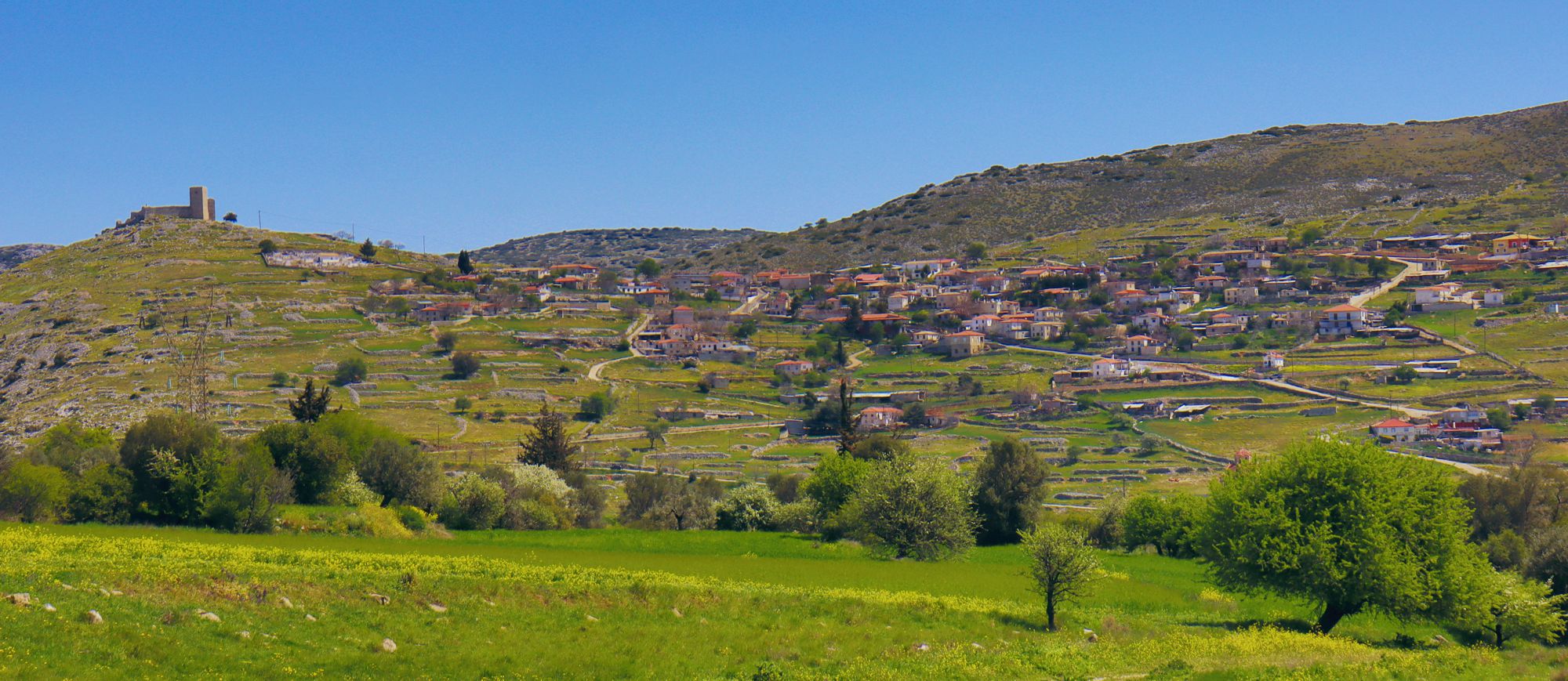
Click to enlarge
Axis, gate and fortress, Dervenakia was not only one of the main landmarks of the Peloponnesian geography and a key element of the natural landscapes of its eastern boundaries, but also an important place of historical memory. It is from here that passed the endless groups of peoples of all ethnicities into Moria (aka. the Peloponnese), eventually transferring their wisdom or misery to the blissful Argolida. This is also the passage through which crossed all great armies, and where the Turkish invasion was stopped; and it is from here that the trains traveled uphill carrying the Argolian apricots and oranges to the markets of the world.
The Mycenaean oreography
The main feature of the mountains that separates Mycenae from Corinthia - the Nyfitsa mountain range - is what makes it claim the title of mountain range, namely its long and steep cliffs. Indeed, a series of intense tectonic movements, after sharply lifting the limestone masses, fragmented them, creating a discontinuous mountain. The rest was undertaken by karstic dissolution, weathering and erosion.
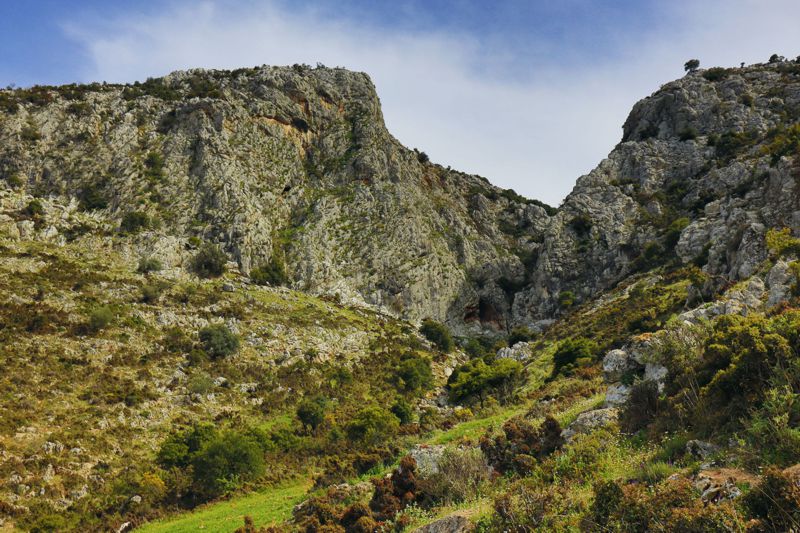
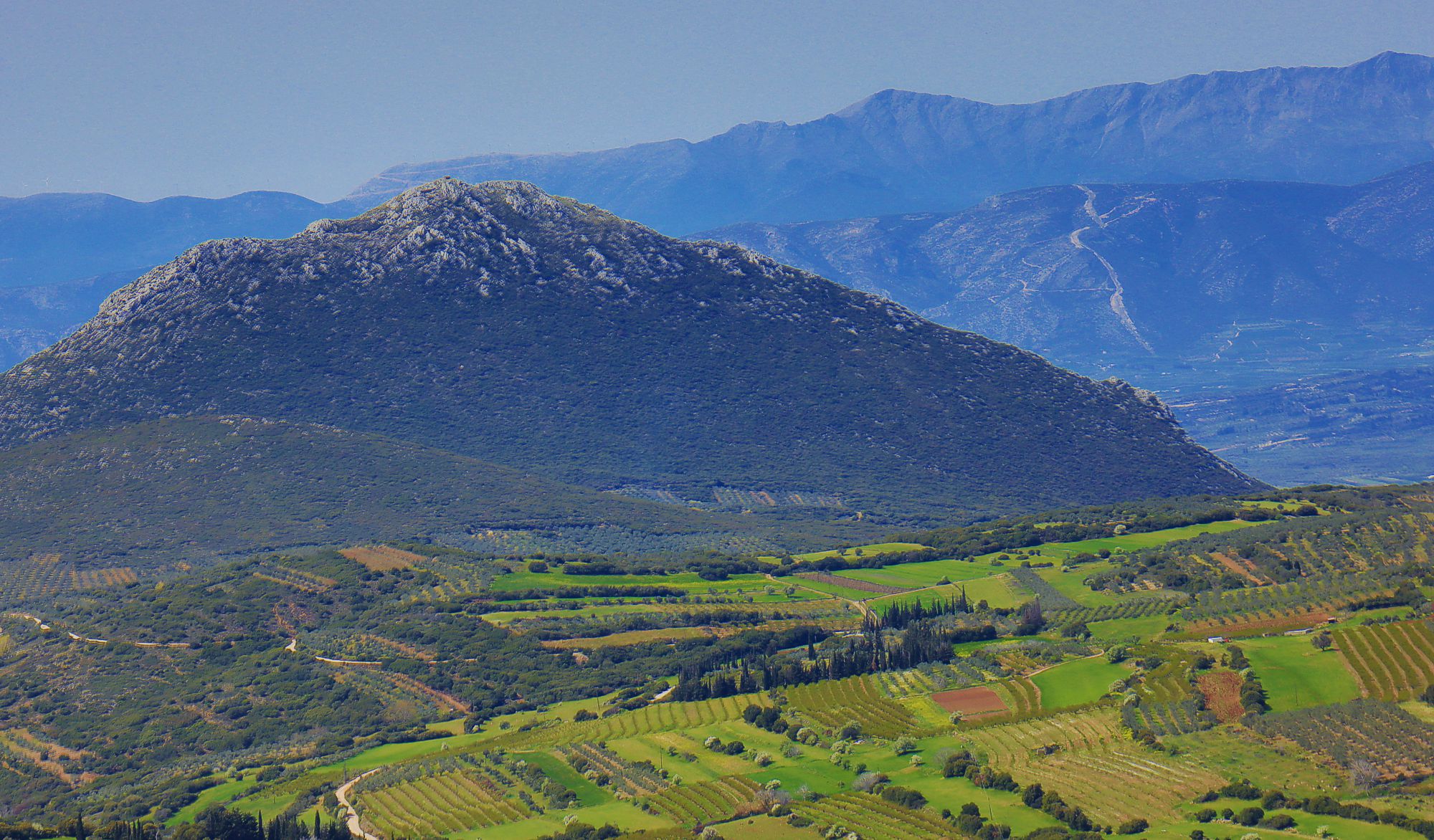
Click to enlarge
Text and photos: T. Adamakopoulos
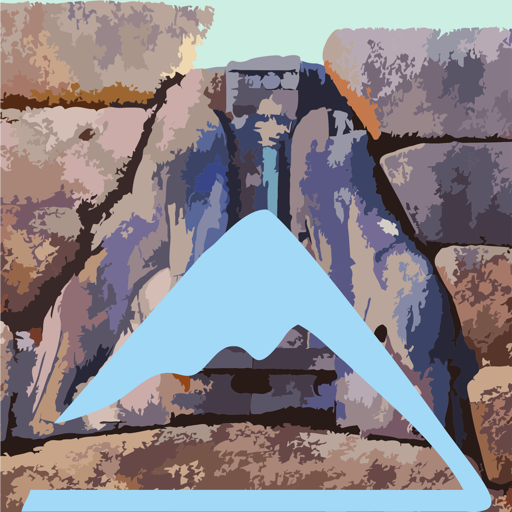
topoguide Greece
A GUIDE FOR THE TRAVELING
ALONG THE MYCENAEAN LANDSCAPE
The guide Mycenae topoguide is available for Android devices along with dozens of other regions of Greece, within the general application topoguide Greece. Mycenae topoguide is a member of the Pelponnese group. Get Mycenae topoguide as an in-app purchase from the topoguide Greece available regions list.
The Mycenae topoguide guide is also available for iOS devices (iPhone and iPad) through the general hiker application Topoguide Greece. Get Mycenae topoguide as an in-app purchase via the available regions list.
It is very interesting that topoguide Greece has the ability to simultaneously display up to 15 different areas, thus allowing an overall view of the Peloponnese and the easy alternation of hundreds of hiking routes, hundreds of Points of Interest and dozens of pages of the guide with innumerable photos.
